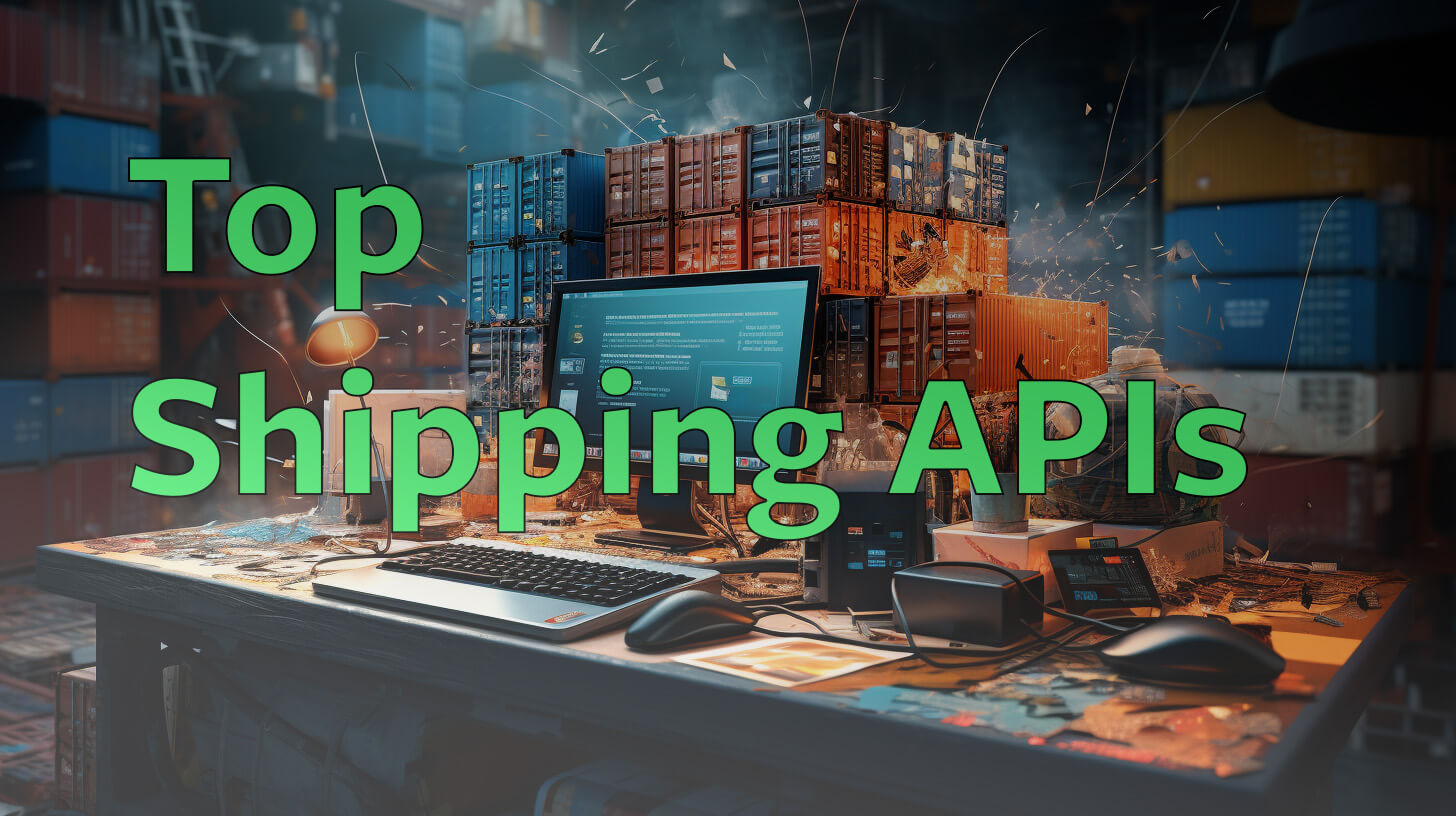
The Pros and Cons of the Top 4 Free Multi-Carrier Shipping APIs with No Monthly Fees
For online retailers, fulfillment companies, and other shippers, managing logistics efficiently is critical yet increasingly complex. Shipping APIs have emerged to help streamline and optimize shipping workflows by providing direct connectivity between key systems. Instead of a developer directly integrating with the shipping carrier’s API, we will look at shipping API services that allow for integration using a REST API that allows a developer to write code access shipping rates and create shipping labels for multiple carriers.
Shipping companies often have their own APIs, but they can be difficult to work with. They often take data input in different ways, for example USPS uses XML, and UPS uses JSON. Say you wanted to get a rate quote, it can become a chore to standardize your software to communicate to both services. It is quicker and cheaper to just use a shipping API that supports multiple carriers.
But what exactly are shipping APIs and how do they work? Shipping APIs are application programming interfaces provided by software companies that connect ecommerce platforms or order management systems to shipping carriers like UPS, FedEx and USPS. The APIs handle tasks like:
Getting real-time shipping rates
Generating shipping labels
Tracking shipments
Validating addresses
Creating manifests
Managing returns and creating return labels
Key benefits of using a shipping API include reducing manual work like data entry of addresses, getting live rates, improving visibility and centralizing shipping across multiple platforms and carriers.
Say you wanted to create your own returns portal for reverse logistics, or you wanted to streamline your 3PL business. Using a shipping API will save you time and money enabling you to launch faster and not waste time maintaining your carrier integrations.
Criteria for Leading Shipping API Providers
There are many shipping API solutions to consider. To make it on this list, there were a few criteria that we used to filter candidates. We excluded APIs that do not offer self-service sign up. If signing up required manual human approval before getting an API key, we left it off the list. We want you to be able to quickly get a proof of concept out and not get caught up in a long sales process.
We’ve also excluded providers that did not provide clear pricing on their website. Anything that had a “Contact us” or “Talk to sales” button before we could get an API key was left off the list. All the APIs on our list let you sign-up and run some test calls via curl or a REST client like Insomnia, Postman, or Thunder Client.
Each of these API providers have a free tier with no monthly fee. They also provide sandbox API keys which let you test your API calls in a non-production environment.
We also left of any provider that that didn’t offer a discount on postage. USPS and UPS discounts are pretty standard fare amongst shipping software, like ShipStation or Stamps.com. It should also apply to shipping APIs. Here are some of the leading options with their notable features:
ShipEngine API

Pricing: Clear stated rates on their pricing page. No monthly subscription fee. Pricing based on number of API calls. The more you ship, the lower each API call becomes. It includes 250 free credits to use in production.
Nice feature: Parse an address. Let’s you just feed the API an unformatted address and it will return the name, street address, city, and state in a nicely formatted JSON object. Makes it easy for your end user to just paste an address into a single text area in instead of pasting in separate street, state, or zip inputs.
CON: No web interface, but they offer pre populated API calls with their Postman collections
PRO: Allows printing of letters and flat rate envelope postage in addition to shipping labels for packages.
PRO: Good email support.
PRO: Discounted USPS and UPS accounts included.
PRO: Includes order source integrations. Pull customer order info from your Shopify or Etsy store using the ShipEngine API.
PRO: 167 carrier integrations.
Shippo API

Pricing: The free starter plan adds a 5 cent charge to any shipping label you create. The $10/month Pro plan removes that fee.
Nice feature: Shipping Elements - a drop-in widget that lets you quickly integrate label purchasing into your site very quickly.
PRO: Good web interface if you still need to occasionally create shipments manually.
PRO: Good email support.
PRO: Includes discounted FedEx, DHL, UPS, and USPS rates.
PRO: Over 85 carrier integrations.
CON: No support of stamps for letter envelopes, but does have support for Flat Rate and predefined envelopes.
Sign-up for a free PRO account (up to a $600 value)
Easypost API

Pricing: Free tier allows for 120,000 shipments per year for the cost of postage. No monthly fee, no additional charge for printed label.
Nice feature: API returns retail rates as well as discounted rates in case you wanted to charge your end user retail rates or show how much they are saving.
CON: Web interface to create labels manually if needed, but doesn’t connect to order sources such as Shopify, which Shippo does.
PRO: Allows printing of envelope postage in addition to shipping labels.
PRO: Good email support.
PRO: Includes discounted FedEx, UPS, and USPS rates.
Easyship API

Pricing: free-tier limits shipping to 50 packages per month. Paid tier starts at $29/month.
CON: Support through their forums only. No email or chat support regarding for the API, only support for ecom integrations.
CON: No thermal label printing format in free tier.
CON: No label customization/branding in free tier.
CON: No return labels in free tier.
PRO: Nice web interface for manually created labels.
PRO: Includes discounted FedEx, DHL, UPS, and USPS rates.
What to Look for in a Shipping API
When evaluating a shipping API, key factors to consider include:
- Carrier support - The API should support all the major carriers you need to ship with domestically and internationally.
- Capabilities - Key features like shipping labels, tracking, and address verification should be supported.
- Documentation - You should be able to get an idea of how easy it will be to integrate the APIs with your ecommerce platform, order management system, warehouse management software, or other internal systems from reading the shipping API instructions.
- Pricing - Shipping API costs vary so compare based on monthly shipments and features needed. Watch for add-ons from the carriers themselves. You’ll want to see how carrier surcharges such as fuel and residential deliveries are handled. Generally the surcharges are included with the calculated API price, but it’s good to clarify.
- Support - Check reviews and select a provider with solid customer service in case API issues arise. Email support a few times before you go into production and make sure they are able to answer your questions quickly and accurately.
- Reliability - have a look at the various status pages, look at their uptimes, but also compare how much detail they provide. It can often give a good indication on how well they communicate in case when things go wrong.